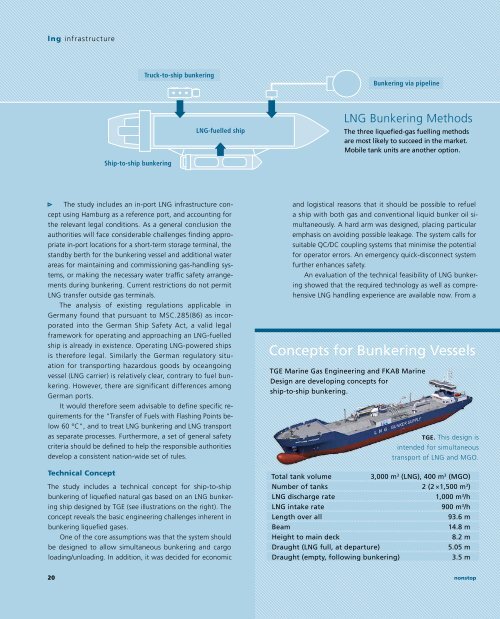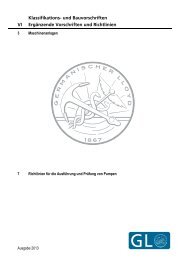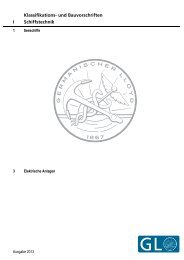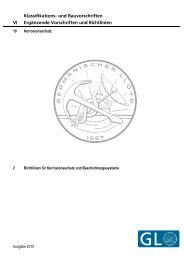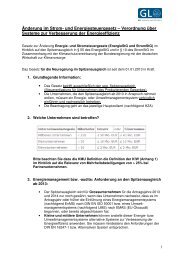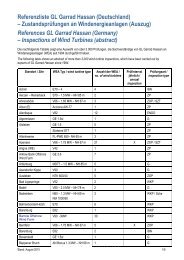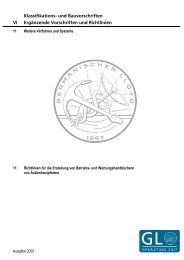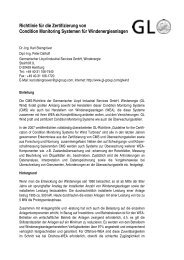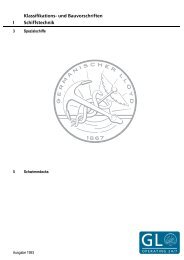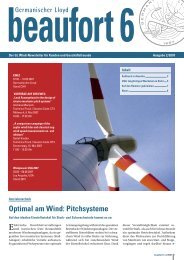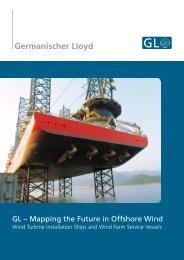Ways to Conserve Energy on Board - DNV
Ways to Conserve Energy on Board - DNV
Ways to Conserve Energy on Board - DNV
Create successful ePaper yourself
Turn your PDF publications into a flip-book with our unique Google optimized e-Paper software.
lng infrastructure<br />
Truck-<str<strong>on</strong>g>to</str<strong>on</strong>g>-ship bunkering<br />
Bunkering via pipeline<br />
LNG-fuelled ship<br />
LNG Bunkering Methods<br />
The three liquefied-gas fuelling methods<br />
are most likely <str<strong>on</strong>g>to</str<strong>on</strong>g> succeed in the market.<br />
Mobile tank units are another opti<strong>on</strong>.<br />
Ship-<str<strong>on</strong>g>to</str<strong>on</strong>g>-ship bunkering<br />
The study includes an in-port LNG infrastructure c<strong>on</strong>cept<br />
using Hamburg as a reference port, and accounting for<br />
the relevant legal c<strong>on</strong>diti<strong>on</strong>s. As a general c<strong>on</strong>clusi<strong>on</strong> the<br />
authorities will face c<strong>on</strong>siderable challenges finding appropriate<br />
in-port locati<strong>on</strong>s for a short-term s<str<strong>on</strong>g>to</str<strong>on</strong>g>rage terminal, the<br />
standby berth for the bunkering vessel and additi<strong>on</strong>al water<br />
areas for maintaining and commissi<strong>on</strong>ing gas-handling systems,<br />
or making the necessary water traffic safety arrangements<br />
during bunkering. Current restricti<strong>on</strong>s do not permit<br />
LNG transfer outside gas terminals.<br />
The analysis of existing regulati<strong>on</strong>s applicable in<br />
Germany found that pursuant <str<strong>on</strong>g>to</str<strong>on</strong>g> MSC.285(86) as incorporated<br />
in<str<strong>on</strong>g>to</str<strong>on</strong>g> the German Ship Safety Act, a valid legal<br />
framework for operating and approaching an LNG-fuelled<br />
ship is already in existence. Operating LNG-powered ships<br />
is therefore legal. Similarly the German regula<str<strong>on</strong>g>to</str<strong>on</strong>g>ry situati<strong>on</strong><br />
for transporting hazardous goods by oceangoing<br />
vessel (LNG carrier) is relatively clear, c<strong>on</strong>trary <str<strong>on</strong>g>to</str<strong>on</strong>g> fuel bunkering.<br />
However, there are significant differences am<strong>on</strong>g<br />
German ports.<br />
It would therefore seem advisable <str<strong>on</strong>g>to</str<strong>on</strong>g> define specific requirements<br />
for the “Transfer of Fuels with Flashing Points below<br />
60 °C”, and <str<strong>on</strong>g>to</str<strong>on</strong>g> treat LNG bunkering and LNG transport<br />
as separate processes. Furthermore, a set of general safety<br />
criteria should be defined <str<strong>on</strong>g>to</str<strong>on</strong>g> help the resp<strong>on</strong>sible authorities<br />
develop a c<strong>on</strong>sistent nati<strong>on</strong>-wide set of rules.<br />
Technical C<strong>on</strong>cept<br />
The study includes a technical c<strong>on</strong>cept for ship-<str<strong>on</strong>g>to</str<strong>on</strong>g>-ship<br />
bunker ing of liquefied natural gas based <strong>on</strong> an LNG bunkering<br />
ship designed by TGE (see illustrati<strong>on</strong>s <strong>on</strong> the right). The<br />
c<strong>on</strong>cept reveals the basic engineering challenges inherent in<br />
bunkering liquefied gases.<br />
One of the core assumpti<strong>on</strong>s was that the system should<br />
be designed <str<strong>on</strong>g>to</str<strong>on</strong>g> allow simultaneous bunkering and cargo<br />
loading/unloading. In additi<strong>on</strong>, it was decided for ec<strong>on</strong>omic<br />
and logistical reas<strong>on</strong>s that it should be possible <str<strong>on</strong>g>to</str<strong>on</strong>g> refuel<br />
a ship with both gas and c<strong>on</strong>venti<strong>on</strong>al liquid bunker oil simultaneously.<br />
A hard arm was designed, placing particular<br />
emphasis <strong>on</strong> avoiding possible leakage. The system calls for<br />
suitable QC/DC coupling systems that minimise the potential<br />
for opera<str<strong>on</strong>g>to</str<strong>on</strong>g>r errors. An emergency quick-disc<strong>on</strong>nect system<br />
further enhances safety.<br />
An evaluati<strong>on</strong> of the technical feasibility of LNG bunkering<br />
showed that the required technology as well as comprehensive<br />
LNG handling experience are available now. From a<br />
C<strong>on</strong>cepts for Bunkering Vessels<br />
TGE Marine Gas Engineering and FKAB Marine<br />
Design are developing c<strong>on</strong>cepts for<br />
ship-<str<strong>on</strong>g>to</str<strong>on</strong>g>-ship bunkering.<br />
TGE. This design is<br />
intended for simultaneous<br />
transport of LNG and MGO.<br />
Total tank volume<br />
3,000 m 3 (LNG), 400 m 3 (MGO)<br />
Number of tanks 2 (2 ×1,500 m 3 )<br />
LNG discharge rate 1,000 m 3 /h<br />
LNG intake rate 900 m 3 /h<br />
Length over all<br />
93.6 m<br />
Beam<br />
14.8 m<br />
Height <str<strong>on</strong>g>to</str<strong>on</strong>g> main deck<br />
8.2 m<br />
Draught (LNG full, at departure)<br />
5.05 m<br />
Draught (empty, following bunkering)<br />
3.5 m<br />
20 n<strong>on</strong>s<str<strong>on</strong>g>to</str<strong>on</strong>g>p


